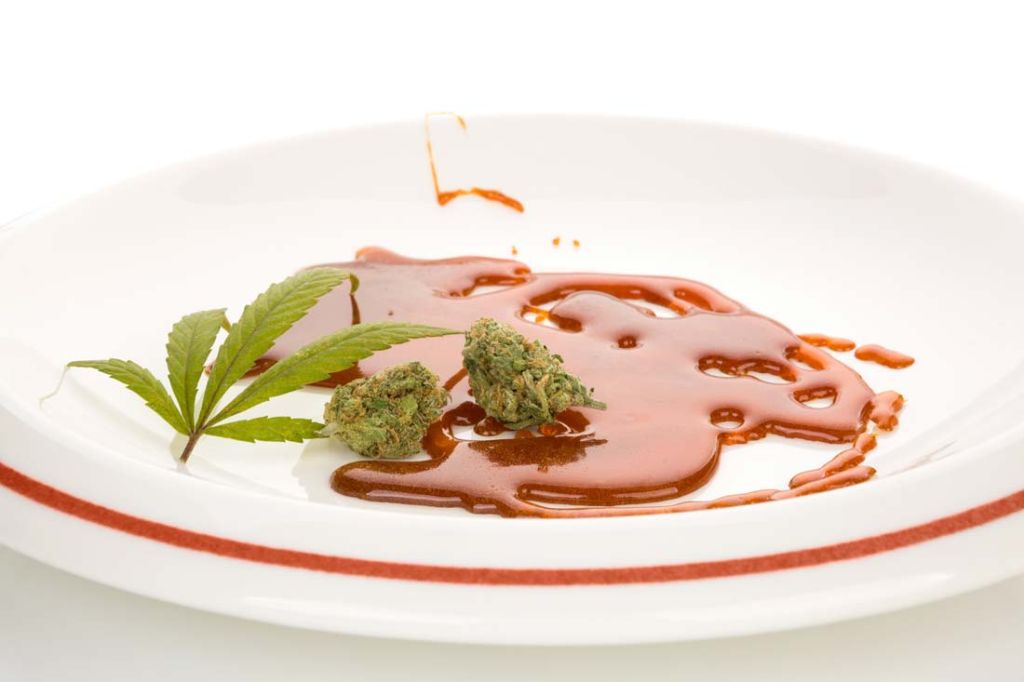Cannabis can be consumed in a variety of ways, but edibles are one of the most widely used. However, what happens if you don’t have any flowers to use in your cooking? Can cannabis concentrates be used to manufacture food? Yes, you certainly can! The many approaches to preparing edibles with concentrates will be covered in this blog post, along with some of their advantages and disadvantages. Let’s get going.
Decarb Your Cannabis Concentrates
You should be aware of what you’re working with because certain cannabis concentrates don’t need to be decarbed before cooking while others must.
Distillates are used by cannabis chefs since they are active, flavorless, and odorless. The loss of entourage effects inherent in full-spectrum extracts is the drawback. THCA is frequently included in cannabis concentrates offered at dispensaries, but they must first be decarbed, which is typically accomplished using a flame, e-nail, or vape pen. Decarboxylation is also necessary to transform the THCA into THC in hash and kief.
For decarbing your wax, budder, sugar, hash, keef, or other extracts, you will require the following tools and materials: a baking sheet covered in parchment paper, and a 200-degree Fahrenheit oven.
- On the parchment paper, spread the extract or plant material. Bake for around 20 minutes. (Dry plant material should be moved with a spatula halfway during baking.)
- Place the old cartridge in the freezer to release the concentrate from it. As a result, it will be able to depart the container in a clump as opposed to as sticky oil.
- Extracts start to bubble when they are at the proper temperature. Watch out for them.

A full-spectrum oil, like FECO or RSO, can be decarbed using a slightly different process that can be carried out on the stovetop. A glass container small enough to fit within the cooking pot, cooking oil, and a cooking pot is required.
- Fill the saucepan with enough cooking oil to make your glass container float.
- Fill the smaller container with the cannabis oil, and then float it over the frying oil.
- Heat the pot gradually until the cannabis oil starts to boil.
- If you use a thermometer, you can avoid overcooking your material. Once the extract reaches the 200-degree (Fahrenheit) sweet spot, remove it from the fire and allow it cool to room temperature.
- To make the texture looser and simpler to work with, you can also gradually add frying oil.
Cannabis Oil vs. Cannabis Butter
You might wish to use either cannabis butter or cannabis oil, depending on the meal you are preparing. Similar to cooking without cannabis, some recipes benefit more from specific ingredients.
Cannabutter is infused into milk or cream, which is then heated until the water has evaporated to create cannabis butter. Cannabis flower or concentrate can both be used in the manufacture of cannabutter.
Contrarily, cannabis concentrate is mixed with carrier oils like olive oil to create cannabis oil. After that, the mixture is boiled for a while (often an hour) to allow the cannabinoids to permeate the oil.

Cooking with Concentrates vs Cooking with Cannabis Flowers
Since the important step of extracting the concentrated cannabis oils has already been completed for you, cooking with concentrates is far simpler than cooking with flower.
Cannabis concentrates are significantly more potent than flower, which means you need to use less of it to get the same effect. This is another important distinction. For instance, you would only need to use one-eighth of an ounce of concentrate if a recipe called for one ounce of flower.
As always, start with a tiny quantity of concentrate and gradually increase it until you find the right dosage for you.
Dosage
Once your marijuana is prepared to cook, you may concentrate on the correct dosing. When employing extracts, however, the options for medicating are less constrained than when using cannabutter or refined oil, where the fat is typically incorporated as butter or oil would be.
Use this calculation to get the dose per serving: Concentrate weight [by the gram] x THC content multiplied by 1,000 / servings
For instance, the formula would be 1 x 0.7 x 1,000 / 10 = 70 milligrams of THC per muffin if you had one gram of 70% THC cannabis oil for ten muffins.
It’s time to start cooking now that you know how to make cannabis edibles with concentrates! Always begin with a little amount of concentrate and gradually increase it until you find the right dosage for yourself. And when figuring out the THC level in your recipes, make sure to concentrate on the correct dosing. We hope you found this instruction useful, whether you’re a novice or a seasoned pro when it comes to cooking with cannabis!
If you’re looking for the best selection of cannabis concentrates, Bud Depot Dispensary in Lyons is the place to go! With a wide variety of product offerings and prices to meet any budget, this dispensary is a great option for anyone who wants to get the highest quality cannabis concentrates for your money.
